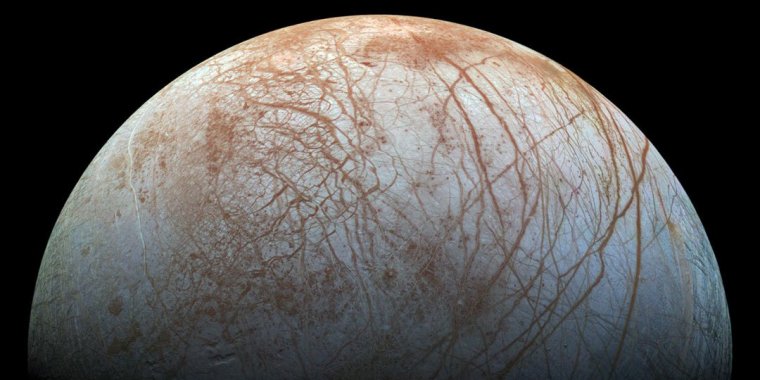| News / Space News |
Icy Warning for Space Missions to Jupiter's Moon
A team led by scientists from Cardiff University has predicted that fields of sharp ice growing to almost 15 metres tall could be scattered across the equatorial regions of Jupiter's moon, Europa.

Europa. Photo: NASA/JPL-Caltech/SETI Institute
Previous space missions have already identified Europa as one of the likeliest destinations for harbouring life in our solar system, most notably because of the large seas of liquid water underneath its surface.
In a new study, scientists state that any potential landing mission may have to navigate hazardous obstacles known as 'penitentes' before touching down on Europa's surface.
Penitentes are tall sharp-edged blades and spikes made of snow and ice that point towards the midday sun. They form through a process known as sublimation, which requires bright, sustained sunlight as well as cold, dry and still air.
Sublimation is a process through which ice turns directly into water vapour without melting into a liquid first. When sublimation occurs, these distinctive blade-like formations are left behind.
Penitentes are present on Earth and grow to between 1 to 5 metres tall, but they are restricted to high-altitude tropical and subtropical conditions, such as in the Andes.
Europa however has the perfect conditions necessary for penitentes to form more uniformly -- its surface is dominated by ice; it has the thermal conditions needed for ice to sublime without melting; and there is very little variation in the angle in which the sun shines on the surface.
In their study, the researchers used observational data to calculate the sublimation rates at various points on Europa's surface and thus used these to estimate the size and distribution of penitentes.
They concluded that the penitentes could potentially grow to around 15 metres tall with a spacing of around 7.5 metres between each one. It was also inferred that the penitentes would be more common around Europa's equator.
No spacecraft has yet landed on Europa; however, NASA intends to undertake a number of flybys around the moon with the Europa Clipper, which will be launched in 2022. It is believed a landing mission could follow soon after. (Tasnim News Agency)
YOU MAY ALSO LIKE




